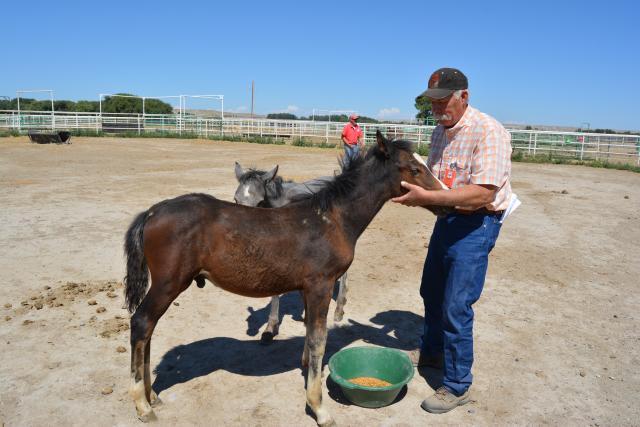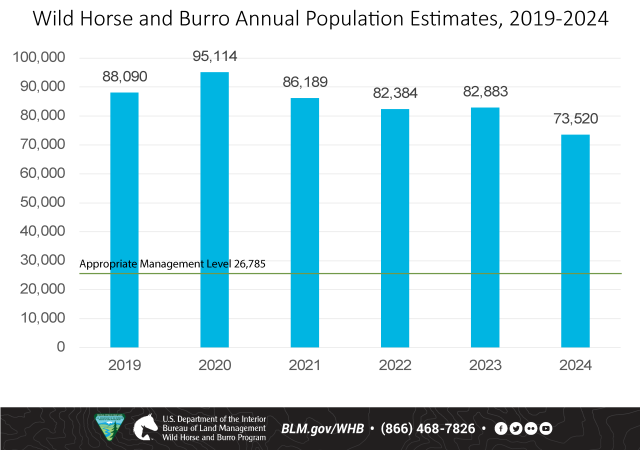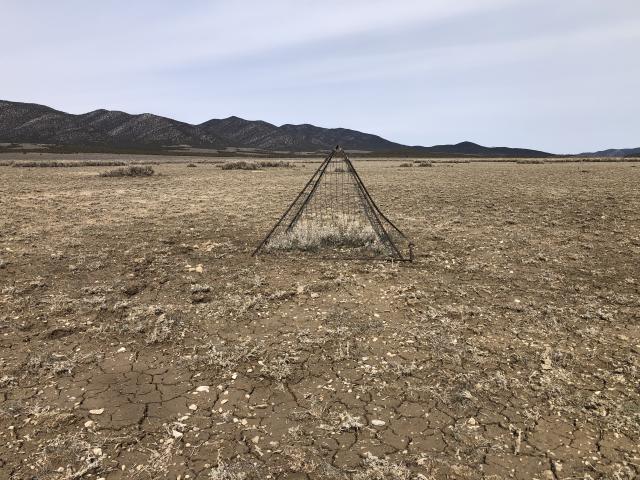You are viewing ARCHIVED content published online before January 20, 2025. Please note that this content is NOT UPDATED, and links may not work. Additionally, any previously issued diversity, equity, inclusion or gender-related guidance on this webpage should be considered rescinded. For current information, visit https://www.blm.gov/blog.
Annual plan for wild horse and burro gather and fertility control operations in Fiscal Year 2025 builds on progress towards healthy herds and healthy lands
The Bureau of Land Management released its tentative plan for wild horse and burro gather and fertility control operations in Fiscal Year 2025, which outlines the bureau’s planned efforts as it works to protect herd and land health across the West. Scott Fluer is the Wild Horse and Burro Program’s Deputy Division Chief for On-Range Operations, and he’s responsible for managing and coordinating the formulation of the annual plan.
“Our goal is to build upon the progress we’ve seen since 2020 to lower overpopulation and give these animals the best possible chance to thrive on public lands,” said Fluer.
Wild horses and burros are protected by the 1971 Wild Free-Roaming Horses and Burros Act, which also mandates their management and control to protect herd and land health. With few natural predators that can control herd growth, wild horse and burro populations increase rapidly on public lands, doubling every 4-5 years without intervention, which can quickly lead to overpopulation in the arid desert environments in which most of the animals roam. The BLM works to reduce and prevent overpopulation through periodic gathers that remove some wild horses and burros for private care, and by using fertility control in some herds to reduce growth.

Recent Population Estimates
The BLM publishes annual estimates of the size of wild horse and burro populations on public lands as of March 1 of every year. According to the most recent estimates, there were about 73,520 wild horses and burros roaming public lands, which is about three times the number that is safe and healthy for the land and the herds over the long term. In some places, herds have reached levels that are 8 times or higher the appropriate management level.
“Chronic overpopulation can have real and serious impacts on the resources these animals, and other wildlife, need to survive on the range, especially come winter,” Fluer explained. Overgrazing can both deplete native vegetation and invite the spread of invasive weeds that are less nutritious to the animals, and can have other impacts such as causing hotter and more frequent wildfires.

Gather and Fertility Control Operations
Throughout Fiscal Year 2025, the BLM plans to conduct gather operations in seventeen herd management areas across Arizona, California, Colorado, Idaho, Nevada, Oregon, Utah and Wyoming, with the majority of gather operations taking place in Nevada, the state with the most wild horses.
One of the herd management areas identified for gather operations is the Triple B Complex in central Nevada. The herd management area complex has been the site of emergency gather operations in the last several years to rescue animals imminently at risk of starvation and thirst. As of March 1, 2024, the Triple B herd was still more than three times over appropriate management level.
“Triple B has been one of the most overpopulated herd management areas in the state, and it has also been the source of several emergency situations in the recent past, “ said Fluer. “Reducing overpopulation in the area will help balance the needs of the animals with what the land can support, and help protect these animals from starvation and thirst.”

The BLM is also planning to conduct fertility control operations in 26 herd management areas. In 16 herd management areas, the BLM will continue to work with volunteers and partner organizations to identify and dart mares with a vaccine that temporarily prevents pregnancy. In herds where ground-darting is not practical, the BLM will capture the animals, provide the treatment, and then release them.
“I am excited that we can continue catch-treat-release operations in three herd management areas this coming year, which enables us to treat more animals with fertility control than we otherwise could,” said Fluer. The treatments will take place in Nevada’s Buffalo Hills and Fish Creek herd management areas, and in the Saylor Creek Herd Management Area in Idaho. As more herds approach appropriate management levels, the BLM intends to increase the use of fertility control to slow herd growth and reduce the need for frequent removals.
Fluer assured that all gathers will be conducted carefully and in full compliance with the BLM’s Comprehensive Animal Welfare Program. “We strive to always conduct operations in the safest, most humane manner for the wild horses and burros under our care.”
Space and budget are the limiting factors
Fluer does not expect a major drop in overpopulation as a result of these operations, but rather, steady progress towards more sustainable populations, and healthier herds and habitats.
“We’re really limited in what we can accomplish this year based on our expected budget resources and off-range capacity to care of the animals that we gather,” said Fluer, referring to the BLM’s off-range corral facilities, which receive and prepare wild horses and burros for adoption. Animals not adopted are eventually transferred to a pasture facility, which provides life-time care for unadopted animals. The planned actions for Fiscal Year 2025 are also contingent on Congressional appropriations.
“Our ability to take care of our wild herds and their habitats really depends on these horses finding their way into good, private homes,” Fluer explained. “Every adoption helps put our wild herds on a better, healthier path.”
Find your next opportunity to give a good home to a wild horse or burro
Jason Lutterman, Public Affairs Specialist
Related Content
Related Stories
- Wild horses and burros find new homes at successful Wyoming adoption event
- Protecting Lands and Communities: Shaila Pomaikai Catan
- Strong turnout and new beginnings: 26 wild horses placed at Montana adoption event
- Celebrating the power of public lands through tourism and community impact
- BLM Wild Horse & Burro Program Adoption Experiences: Life After Adoption
